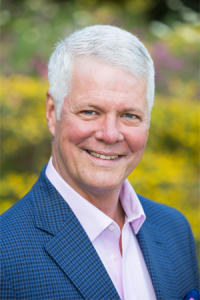The Markets
Where’s inflation?
If you enjoy searching for Waldo, the visual nemesis in a red-striped sweater and cap, you may appreciate the quandary of central bankers in many wealthy nations. For almost a decade, they’ve been trying to find inflation.
Last week, there were reports of a sighting in the United States.
The core U.S. Consumer Price Index (CPI) measures changes in the prices Americans pay for goods. The Index rose 0.3 percent from July to August. It was up 2.4 percent year-to-year, reflecting the fastest annual growth rate since July 2018, reported The Wall Street Journal.
Rising healthcare costs were one reason for inflation gains, reported CNBC. In addition, Axios reported:
“The costs of the U.S. tariffs on Chinese imports clearly made an impact on the [inflation] reading, but wages also picked up notably last month as seen in the government’s jobs report. The reading may indicate that inflation is making a sustained comeback.”
Central banks don’t want inflation to be too high, as it has been in Argentina (22.4 percent year-to-date). They also don’t want it to be too low, because low inflation can be a sign of economic weakness.
The Federal Reserve (Fed), which is our central bank, considers 2 percent inflation to be consistent with a healthy economy, reported The Wall Street Journal.
If you were reading carefully, you may have noted the CPI was above 2 percent. While the CPI measures inflation, it’s not the Fed’s favorite inflation gauge. Fed officials prefer the Personal Consumption and Expenditures Price Index (PCE), which estimated inflation at 1.4 percent in July. The PCE was up 0.2 percent for the month.
U.S. stocks moved higher again last week on solid retail sales and positive trade news.
| Data as of 9/13/19 | 1-Week | Y-T-D | 1-Year | 3-Year | 5-Year | 10-Year |
| Standard & Poor’s 500 (Domestic Stocks) | 1.0% | 20.0% | 3.6% | 12.2% | 8.7% | 11.1% |
| Dow Jones Global ex-U.S. | 0.4 | 10.8 | -0.3 | 4.8 | 0.4 | 2.5 |
| 10-year Treasury Note (Yield Only) | 1.9 | NA | 2.9 | 1.7 | 2.6 | 3.4 |
| Gold (per ounce) | -1.4 | 17.3 | 24.2 | 4.3 | 4.0 | 4.2 |
| Bloomberg Commodity Index | 1.0 | 2.6 | -4.9 | -1.8 | -8.3 | -4.5 |
S&P 500, Dow Jones Global ex-US, Gold, Bloomberg Commodity Index returns exclude reinvested dividends (gold does not pay a dividend) and the three-, five-, and 10-year returns are annualized; and the 10-year Treasury Note is simply the yield at the close of the day on each of the historical time periods.
Sources: Yahoo! Finance, MarketWatch, djindexes.com, London Bullion Market Association.
Past performance is no guarantee of future results. Indices are unmanaged and cannot be invested into directly. N/A means not applicable.
WHAT WOULD YOU CHOOSE?
Americans spend a lot of time at work. The Bureau of Labor Statistics’ 2018 American Time Use Survey reported people employed full-time worked 8-1/2 hours on weekdays, on average, and almost 5-1/2 hours on weekend days (when they worked on weekends).
If you estimate 8 hours of sleep a night and two weeks of vacation, at least one-third of awake-time is spent at work. That may explain why some people have strong opinions about dress codes and workspaces. How would you answer these questions?
If your employer gave you the choice, would you prefer to wear casual clothes to the office or receive a $5,000 salary bump?
Dress casual has become the new norm in many workplaces. A significant percentage of employees participating in a recent Randstad US survey (33 percent) like it so much, they would sacrifice a $5,000 salary increase to keep it that way.
Imagine that. One-third of workers would give up $25,000, assuming they stayed with their employer for five years, to avoid pantyhose and neckties.
In the same survey, one-third of participants said they would turn down a job offer or quit, if the employer insisted on a conservative dress code.
Interestingly, some psychology studies have found more formal clothing may affect: 1) the way others perceive you, 2) how you perceive yourself, and 3) how you make decisions.
If you were given the choice, would you opt for a totally open, a totally private, or a shared workspace?
Four-of-10 American workers get to choose where they work within their offices. Preferences vary significantly. The top choices for 2019, according to a Western Office survey were:
- 28 percent: Mostly open space, just a few walls and private space available on-demand.
- 23 percent: Mostly private space, an agglomeration of shared offices and team rooms.
- 20 percent: Somewhat open, a combination of offices and cubicles.
The survey suggested having a workspace that suits employees’ preferences can improve efficiency, making companies more productive and profitable.
Weekly Focus – Think About It
“I am awfully greedy; I want everything from life. I want to have many friends and to have loneliness, to work much and write good books, to travel and enjoy myself, to be selfish and to be unselfish…You see, it is difficult to get all which I want. And then when I do not succeed, I get mad with anger.”
–Simone de Beauvoir, writer and philosopher
Sincerely,
Your Team at Wellspring Wealth
 |  |  |  |  |  |  |
| David Glover | Fredrick Livingston | Mark Winston | Dennis Wright | Caleb Tucker | Andrew Wright | Valeri Bishop |
| AIF® | CLU®,CFP® | CFP®, AIF® | AEP®, ChFC®, CLU® | CFA®, AWMA®, AAMS® | AIF® |
Sources:
Sources:
https://econofact.org/whats-the-problem-with-low-inflation
https://www.wsj.com/articles/u-s-consumer-prices-rose-0-1-in-august-11568292160 (or go to https://peakcontent.s3-us-west-2.amazonaws.com/+Peak+Commentary/09-16-19_WSJ-Weak_Energy_Prices_Held_Down_Overall_Inflation_in_August-Footnote_2.pdf)
https://www.cnbc.com/2019/08/13/consumer-price-index-july-2019.html
https://www.bea.gov/news/2019/personal-income-and-outlays-july-2019
https://www.bls.gov/news.release/pdf/atus.pdf
https://www.westernoffice.com/files/gensler-us-workplace-survey-2019_15776.pdf
